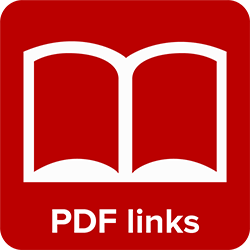Module 6: Social Context Theories
Ch. 3: Family
This chapter explores topics related to the role that family and other close (microsystem) relationship play in the addiction experience. In this chapter you will read about:
- the family disease model and codependency controversy;
- families as dynamic systems
- the importance of family to individuals experiencing substance use disorders
- family relationships as protection from or contributing to substance use disorders, including Supportive Significant Others (SSOs)
- key terms used in the field of substance use disorders and addiction.
There is no doubt that substance use disorders “run” in families. We explored some of the data in Module 3 & 4 about the genetic models. As we learned then, expression of our genetic vulnerability or resilience to addiction is heavily influenced by environment and experience. The family system is a powerful source of environmental influence to consider. Not only do we need to consider how social learning, social norms, and cultural beliefs related to alcohol and other substances operate within families, we also need to consider how family system principles apply. Family systems theory is discussed in some detail in your lecture content. One of the important features that warrants attention here is the principle of homeostasis as it applies to families. Remember, we learned about homeostasis operating at the individual level in our Module 3 & 4 when looking at how the human body, as a system, works to achieve stability and balance. Family systems do the same. They tend to develop rules, norms, patterns of communication and behavior, and roles that serve this homeostatic function. Consider for example, a family “rule” about not discussing or tending to minimize a member’s substance use. This behavior might be dysfunctional in terms of getting the individual’s problem addressed, but may serve the family function of keeping the peace despite the problem.
You have read in earlier modules about the disease concept of addiction. Here it makes sense to consider the family disease model of addiction. This perspective stems from awareness of how one family member’s substance-related problems affect other family members—especially in couples relationships and parent-child relationships (McCrady, Epstein, & Sell, 2003). In this model, the family as a whole is viewed as suffering from disease of addiction. This family disease is characterized by family dysfunction in terms of roles, communication, relationships, and other functions. The implication is that treating addiction requires intervention with families, not just individuals.
The family disease model becomes controversial when defining the disease as codependency. The codependency assumption is based on a clinical observation that certain traits and characteristics are common within families experiencing a member’s addiction. These traits are characterized by family members’ behaviors being organized around the one person’s dysfunctional addiction-related behaviors, rather than functioning from within themselves. The codependent family members’ behaviors are viewed as supporting or enabling the dysfunctional behavior of the person with addiction because they have become dependent on that dysfunctional behavior being maintained. However, many practitioners argue against such a model and against applying the label or diagnosis of codependency. One reason is that many of the behaviors identified as codependent instead can be viewed as reasonable adaptive responses to a family member’s addiction. A second reason is that many of the observed behaviors are also seen in healthy families, therefore are not unique to families where a member experiences addiction. Third, the label has become overused and imprecise, and results in a sort of “blaming” or “shaming” of family members for the problems they experience. Finally, while “clinical descriptions of codependency are common, empirical support for the concept is lacking…there are no compelling empirical data to support the full construct of codependency” (McCrady, Epstein, & Sell, 2003, p. 120). Despite this level of controversy, the family disease model continues to underlie the intervention approach taken by some practitioners and the beliefs of many nonprofessionals in the public.
Another principle to keep in mind when thinking about family (and peers) with regards to the issue of substance use and misuse is about homophily. The idea is that human nature leads us to tend to choose partners and to socialize with acquaintances/friends with whom we have things in common—people similar to us. The saying is, “birds of a feather, tend to flock together.” The implication for the substance use arena is that people who choose to use certain substances may choose partners and friends, or to spend time in the company of others who also use those substances. Not only does this have the impact of filtering the social norms and social learning mechanisms to which we are exposed, it also increases the likelihood that if one member of a couple has a substance-related problem, the other may, as well. This, in turn, can complicate the treatment process.
What’s Next?
The remaining reading in this chapter interfaces with the lecture content where you learn about family systems theory and the role of “Supportive Significant Others” (SSOs) in the process of developing and recovery from substance use disorders. The reading is McCrady, B.S. (2006). Family and other close relationships. In W.R. Miller & K.M. Carroll, (Eds.), Rethinking substance abuse: What the science shows and what we should do about it, (pp. 166-181).

Click here for a link to our Carmen course where you can locate the assigned pdf file(s) for this chapter. You will need to be logged into our Carmen course, select Module 6, and proceed to the Coursework area. Under the Readings heading you will find a box with links to the readings for relevant coursebook chapters. Don’t forget to return here in your coursebook to complete the remaining chapters and interactive activities.
Please try this exercise to test your knowledge:
